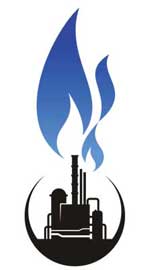Flare Gas to Power project
By Guy Bruce, P.Eng., For APEGS’ Environment and Sustainability Committee and Project Advisor, First Nations Power Authority
November 1st, 2021
By Guy Bruce, P.Eng., For APEGS’ Environment and Sustainability Committee and Project Advisor, First Nations Power Authority

This is the third of a series of articles on the United Nations Sustainable Development Goals and how they relate to the practice of engineering and geoscience.
Flying Dust First Nation (FDFN) has a vision to be part of the economic fabric of Saskatchewan. Nearly 10 years ago they began to look for economic development opportunities that would benefit their community and help oil producers deal with evolving greenhouse gas emissions regulations.
Hard work, persistence and a unique relationship between First Nations Power Authority (FNPA) and SaskPower has enabled this dream to become a reality.
In 2018, the FNPA and SaskPower signed a First Nations Opportunity Agreement. This agreement sets out the framework for development of up to 20 MW of electricity generation capacity by FDFN and their partners from one or more flare gas stacks. The result will lead to reduced GHG emissions as well as a significant revenue stream and jobs for the Flying Dust community.
The opportunity exists because the gas released during oil extraction is a major source of GHG emissions in Saskatchewan. The vented gas, which is mostly methane, has a major greenhouse gas impact that is many times more potent than carbon dioxide (CO2). The Saskatchewan government now requires flaring (combustion) of all associated gas, above certain volumes, to reduce methane emissions. In addition, regulations are now in place which require oil producers to limit their overall GHG emissions. As the main biproduct of combustion from the flare stack is CO2 and heat, this represents an opportunity for electricity generation.
Many oil producers have the option of delivering the gas they produce to a mid-stream facility which extracts high-value liquids such as butane and propane and produces pipeline-quality natural gas (mostly methane) for SaskEnergy and other customers. When the option to deliver associated gas to midstream facilities does not exist, or is not economical, oil producers look for economical ways to capture the waste gas and turn it into useful energy in the form of carbon-neutral electricity generation.
SaskPower’s Power Generation Partner Program, which ran for three years, was one such option and may have proven viable for some. That program had a cap of 75 MW for carbon-neutral generation, which included flare gas to power generation. An additional opportunity for carbon-neutral generation is provided through the FNPA agreement with SaskPower.
When the FDFN Flare Gas to Power projects are fully operational they are expected to produce 20 MW of dependable, base load electricity, enough to power as many as 20,000 homes. FDFN’s partners will bring the associated gas from oil producers and deliver it to a FDFN power-generating facility. The facility will house engines designed to burn the gas cleanly and efficiently and drive a generator. The electricity produced will then be purchased by SaskPower and delivered into SaskPower’s grid.
Every kilowatt hour of flare gas generated electricity produced is one that does not have to be produced by one of SaskPower’s power plants, some of which are coal fired. As a result, the overall GHG emissions intensity in Saskatchewan will be reduced.